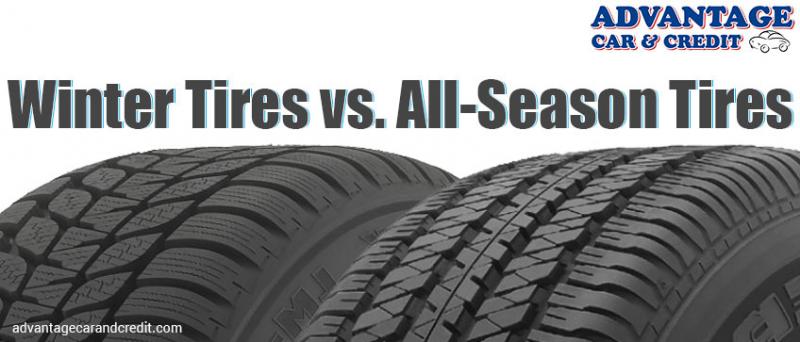by Justin Wallman - Posted 5 years ago

Another option for drivers is all-season tires, which provide a performance compromise that will work in nearly any type of weather or season. But be aware. There are some subtle differences between these tires and how they are marketed.
There are no magical tires in existence that will let you drive through snowy and icy conditions as if it were a clear dry day. Caution and good judgment still must be exercised even when using specialty tires.
Winter tires can be identified by their uniquely aggressive tread pattern, as well as a three-peaked mountain snowflake symbol.
Known as the severe snow service rating, this snowflake symbol represents their ability to handle a wide variety of winter conditions. They are customized for superb performance on snow, slush, and ice.
All-season tires are optimized for adequate performance in all conditions year-round. Many all-season tires feature the letters “M&S” on their sidewall, indicating that they are “snow-rated.”
This does mean they have better than average snow performance than other all-season tires. But it does not mean that they come close to matching an actual winter tire.
Mud & Snow (M&S) ratings can be the source of confusion for tire customers. An M&S rating is achieved by meeting industry standards for straight-line traction on packed snow or mud. It does not cover braking or cornering, nor does it account for slush, ice, or extremely low temperatures. The cold slushy mess that often defines winters in the Northeast is not considered in this rating.
Recently, some manufacturers of all-season tires have undergone testing to achieve a severe snow service rating for certain models. This a great way to promote sales to customers in areas that receive difficult winter conditions.
However, because these tires are made with all-season rubber compounds, they cannot function as well as a dedicated winter tire in cold weather. With the need to function in both hot and cold, they tend to become hard and lose traction in low temperatures.
Do not be fooled by the mountain snowflake symbol, as these tires are absolutely not the same thing as actual winter tires.
Winter tires are poor performers in hot weather. In order to function well at low temperatures, their compound material is designed to be pliable in extreme cold. The downside is that as temperatures rise, winter tires start to erode very quickly.
The best advice is to switch to a different pair of tires once winter is over to prolong their life.
No tire will ever provide perfect performance in all conditions. Choosing the right tire is a matter of finding the tire that is “right enough” for your intended use. If you need help choosing the correct tire for you, Advantage Car & Credit is here to help. Our full-service garage can help you with all of your mechanical needs, including tires.